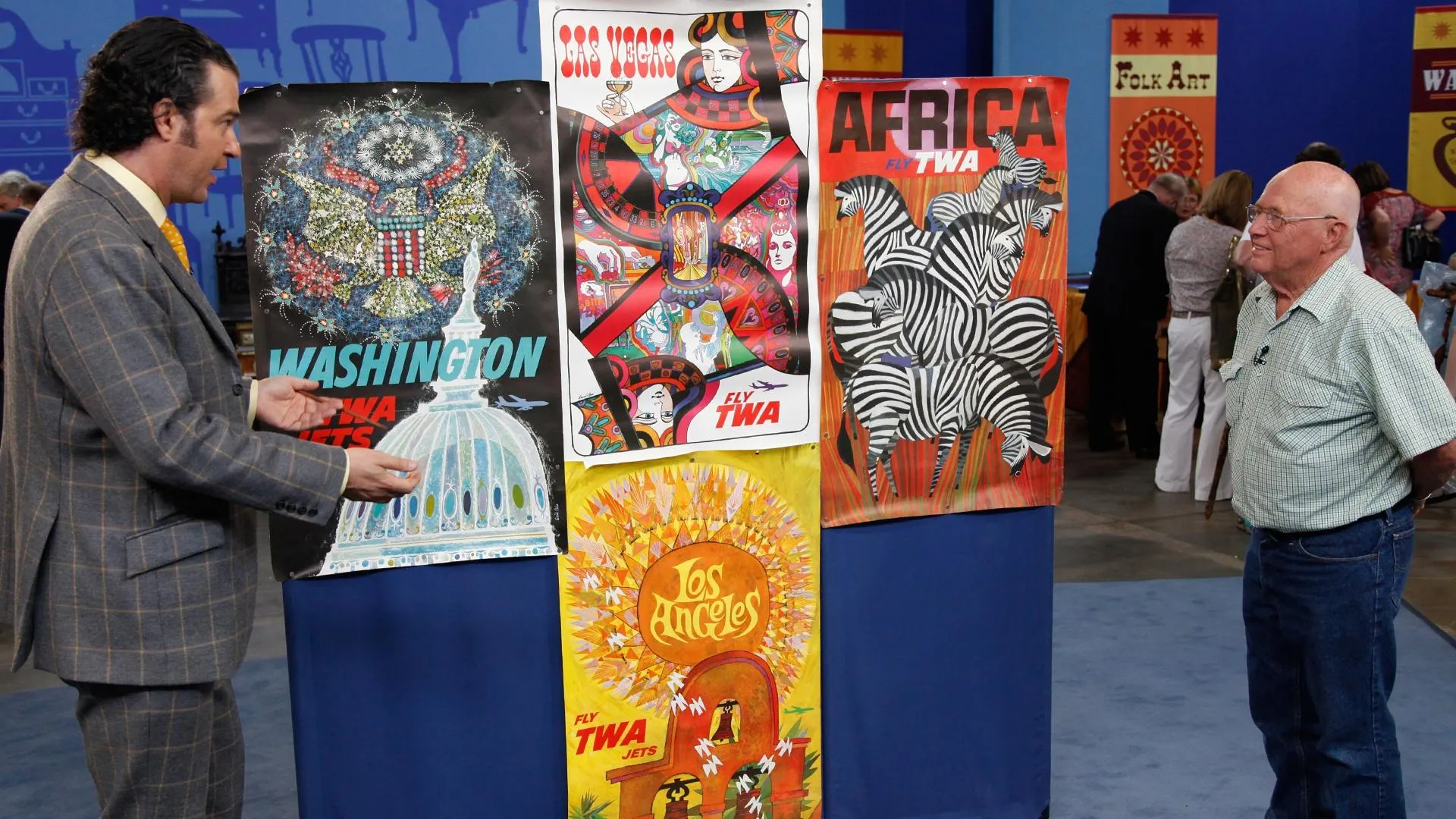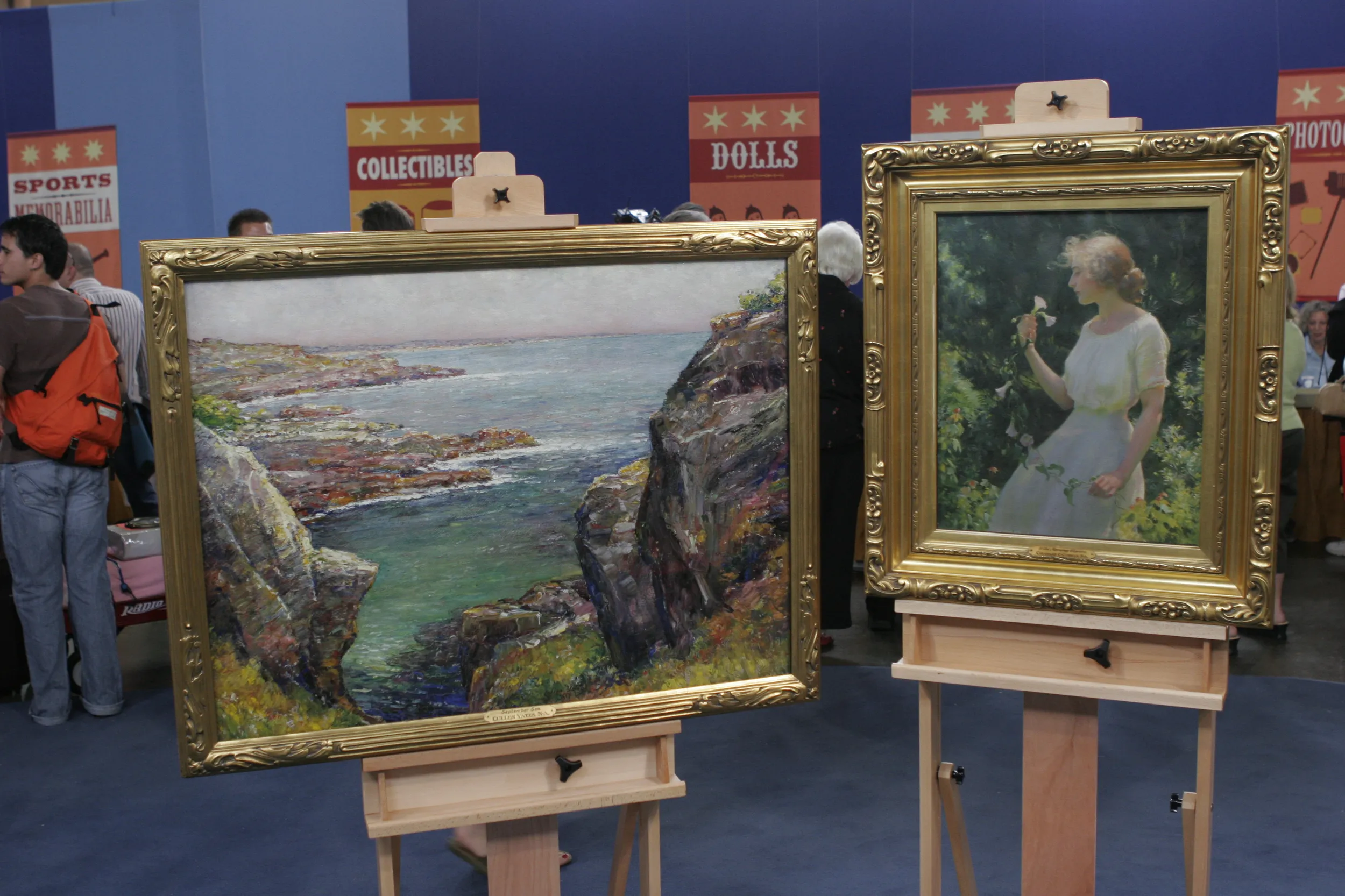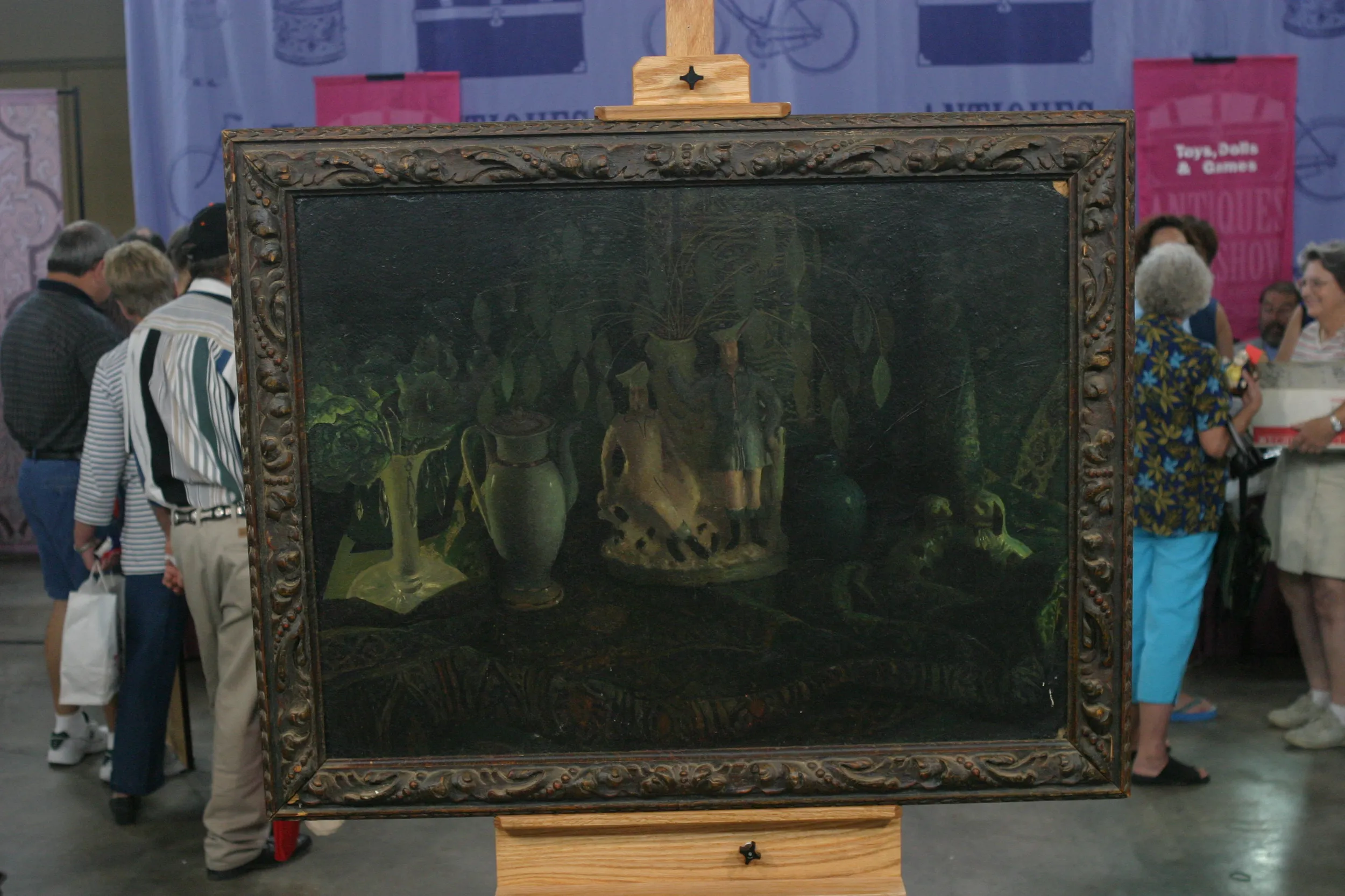GUEST: Well, I brought in a painting that's been in the family for a lot of years. My parents purchased it in the '60s.
APPRAISER: Do you remember how much it cost when it was first acquired?
GUEST: Yes. When my parents first purchased it, it was $325 per painting is what they paid. And we have another one at home.
APPRAISER: And has the painting been recently appraised?
GUEST: No. The last time it was appraised...and I believe it was just the art gallery kind of just upgrading the value of it in 1993.
APPRAISER: And what was the valuation then?
GUEST: $7,500 at that time.
APPRAISER: $7,500. Do you know who the painter is?
GUEST: Yes, Édouard Cortès.
APPRAISER: Cortès was born in 1882. He lived to 1969. He's from an area near Paris called Lagny and quite prolific. I have seen countless works by Cortès. His stock-in-trade was doing these scenes of Parisian streets. This is the Rue Royale. And behind the Rue Royale, we have la Madeleine. And la Madeleine was a subject that he treated over and over again. It's a classic Cortès piece in terms of the style, in terms of the subject matter. He is an artist who worked in various size canvases. Yours is roughly about 13 by 18 inches, which is a real common size.
GUEST: Okay.
APPRAISER: He studied at the École des Beaux-Arts. He also became president of the Union des Beaux-Arts. Two very prestigious art organizations. A lot of the Cortès paintings have a kind of a single vanishing point perspective.
GUEST: Okay.
APPRAISER: You correctly pointed out that he would use a pin to sort of serve as the vanishing point by which all the other animals, figures, horse carts would then be used in perspective. Did you ever find that pinhole?
GUEST: Well, I'm not sure. We think it might be right up in here. But I'm not sure if that's it or not.
APPRAISER: The back of the painting is covered in cardboard, largely. So it's a little hard to see. But with a little bit of checking, what I was able to find was the pinhole in fact is right there.
GUEST: Okay.
APPRAISER: All right. And that would make more sense relative to the single vanishing point perspective.
GUEST: Yes, it would, yeah.
APPRAISER: What I love about the painting is you've got the original frame, you've got the original double-cloth liner. It's in great condition. The colors that we associate with Cortès's work, the brightness. The painterly qualities and the highlights, they're all there. Very typical as well that the faces are never really fully depicted. They're never really fully realized. All of that said, is the painting currently insured?
GUEST: (laughing) No.
APPRAISER: Do you have any idea what it would be insured for?
GUEST: No, I really don't. I have no idea.
APPRAISER: In other words, if one were to walk into a very good retail shop selling paintings, how much do you think you might have to pay?
GUEST: Maybe around $10,000 or so.
APPRAISER: If you could buy this today at a retail shop specializing in School of Paris paintings, $10,000 I think would be a steal.
GUEST: Okay.
APPRAISER: I would actually expect to pay closer to $55,000. Which is a little bit better than $10,000.
GUEST: (laughing) It certainly is. Oh, good heavens. Thank you.
APPRAISER: Thank you very much.









